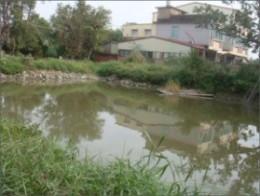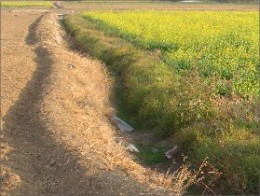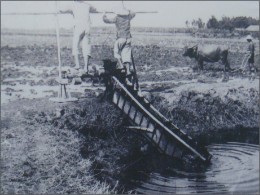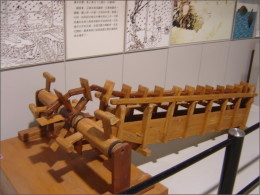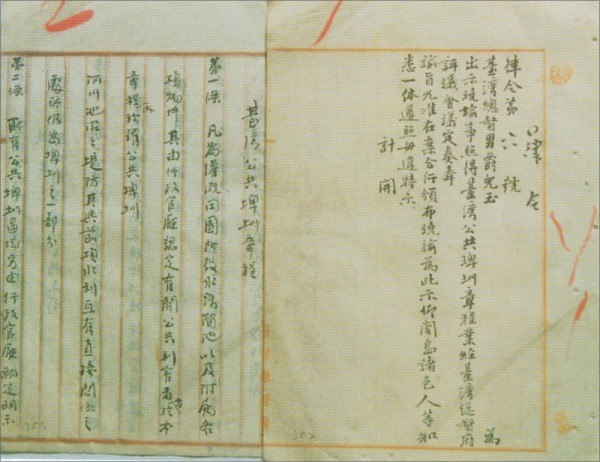|
|
|||||||||||
 |
|||||||||||
|
|
|||||||||||
|
|
..........................................................................................................................................................................................................
▌Hydraulic Facilities before Japanese Colonial Period
During the Period of Dutch Occupation, a “Dutch Weir” was made of bamboo sticks, grass, and mud. By the Qing Dynasty, the Han Chinese reclaimed wasteland in Taiwan. Later, hydraulic facilities gradually increased in number. Most of these hydraulic facilities were privately made but at times local authorities would also fund these hydraulic facilities. County Magistrate Chu Chung-Shuan of Chu-Lo County once donated money and grains to help start construction on the hydraulic facilities.
During the Qing Dynasty, the hydraulic
facilities in use at the time were: reservoirs and canals. A reservoir
is a water storage tank while a canal is an irrigation canal. Since the
irrigation techniques were rather backward at the time, there were few
complex canals and there were more reservoirs. These reservoirs were
mostly large low-lands. There was no flow of river water into these
reservoirs. Instead, water came from the rain. This type of hydraulic
facility is incapable of irrigation large areas and the water supply is
limited.
▌Hydraulic Facilities during early Japanese Colonial Period
After the first Sino-Japanese War, Taiwan was ceded to Japan. Japan decided to use this new colony as a place to produce rice and sugarcane, which would be supplied in Japan. The colonial government initiated the policy “Industrial Japan; Agriculture Taiwan”. In order to enhance agricultural production, The Office of the Taiwan Governor General of Taiwan actively promoted crop species culture technique and improvement, and engaged in industrial integration. Much importance was also given to the construction and repair of hydraulic facilities.
Nevertheless, during early Japanese rule in Taiwan, The Office of the Taiwan Governor General had limited means to start a large-scale construction on hydraulic facilities. Thus, old reservoirs and canals were first repaired. In 1901, The Office of the Taiwan Governor General promulgated “Public Reservoir Canal Code”. If a certain reservoir or canal were of public interest, the governed would designate it as a “public reservoir/canal”, and expenditure on repair and integration would be government funded.
Public Reservoir/Canal Code Promulgated by the Office of the Taiwan Governor General of Taiwan
By 1908, The Office of the Taiwan Governor General also setup “Public Reservoir/Canal Code”. It states that if the local residents are incapable of a large-scale irrigation engineering, the government shall directly takeover its operations. There were 14 reservoirs and canals that underwent repair, however, in 1912, after central Taiwan was subject to a serious typhoon, all the rivers in Taiwan flooded and the repair project was temporarily terminated.
|
||||||||||
 |
|||||||||||
|
|
|||||||||||
|
▍Hsin Chia Elementary School ˙Houbi Township, Tainan County , Taiwan (R.O.C.)˙2008˙1024*768 |
|||||||||||
